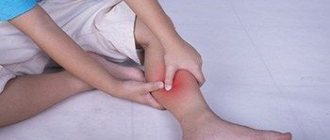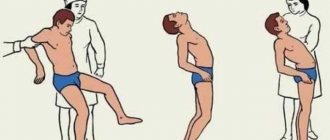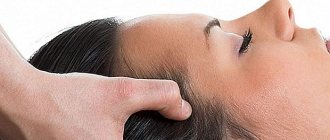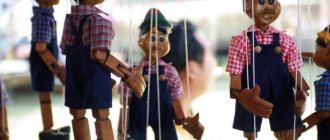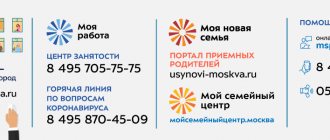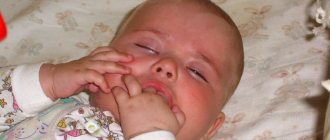Alalia is the name given to underdevelopment or complete absence of speech in children. This is the result of damage to the central nervous system that occurred either in fetal development or in the first 3 years of the child’s life. If the necessary measures are not taken in time, a child with such a disease will never learn to talk.
Alalia is in no way associated with intellectual or hearing impairments of the child. There are cases when patients with this disease began to talk only after reaching school age.
Please note: Alalia is a disease that cannot be treated independently. To find out an accurate diagnosis and receive subsequent treatment, you need to contact a neurologist who will examine the child.
The appearance of secondary speech delay occurs if treatment for alalia was started at a later age of the patient. Children with this disease demonstrate a poorer knowledge of the world around them than their peers. Alalia is accompanied by violations of lexical, phonetic, syntactic, morphological and grammatical speech.
Sensory alalia
This is a developmental defect in which the patient does not speak himself. He is also unable to understand the words that are addressed to him. Among children who suffer from problems associated with the speech apparatus, sensory alalia occurs only in 10% of cases.
With sensory alalia, the child does not understand the speech of others, and his speech does not develop. Speech impairment in this case is secondary in nature, as it is associated with problems related to misunderstanding of the speech of others and impaired phonemic hearing.
This form of alalia is accompanied by underdevelopment or damage to the speech-hearing analyzer. As a result, the child is unable to connect sounds heard from adults into words.
Types of alalia
Alalia can be expressed in different forms, each of which has its own characteristics depending on the defect and specific manifestations:
- Expressive (motor) alalia is diagnosed when there is an organic lesion in the speech motor analyzer section. Characterized by a delay in the development of speech function or its stop at any stage, while the understanding of the words of others does not suffer. With this type of alalia, the child has difficulties in expressive speech, grammar, and a poor vocabulary. Depending on which area was affected, subspecies are distinguished:
- afferent - appears if the lower parietal parts of the brain are affected, the method of manifestation is incorrect or difficult articulation;
- efferent - characteristic of damage to the premotor cortex, which leads to disruption of the syllabic structure of words.
- Impressive (sensory) alalia - appears after lesions of the speech-hearing analyzer. Disturbances in the perception of sound are characteristic when the auditory analyzer is healthy (the child does not understand the meaning of the words addressed to him). It looks like a gap between the meaning and sound of words.
- Mixed (sensorimotor) alalia - occurs with a combination of organic disorders of the auditory and motor areas. The severity of the defect in these areas can be different, that is, motor defects can be severe, and sensory ones can be mild, or vice versa. It is precisely because of the multiplicity of options and combined symptoms that this type of alalia is considered the most severe speech defect, both from the point of view of diagnosis and correction.
A pure type of speech disorder is quite rare. The most common form of alalia is mixed, with a predominance of one direction. In addition, determining the type of alalia is complicated by the fact that the symptoms overlap with indicators of other disorders or are accompanied by intellectual and emotional deviations.
Causes
The reason for the appearance of sensory alalia in a child is damage to certain areas of the brain that are located in the cortical part. These zones are responsible for the speech apparatus, understanding and analysis of audible sounds. The following factors can lead to such a violation:
- Diseases that arise in the first years of a child’s life.
- Central nervous system disorders that arose during complicated childbirth.
- Fetal pathologies that appeared during pregnancy.
A speech disorder such as sensory alalia can also be caused by other reasons. Diagnosis of the disease is possible only after a complete examination of the baby by specialists such as a neurologist, speech therapist and psychologist.
Forecast
In most cases, with timely treatment, children recover. Over time, their speech becomes understandable, and in terms of intellectual development, such a child will not lag behind his peers. But in some cases, due to the advanced form of alalia, doctors cannot guarantee complete relief from this disease.
Sign up for a consultation. The children's speech therapist and psychologist of the center will determine the individual causes of alalia, give recommendations for correction, and also draw up a plan for classes in the center and at home. This system of work will make the correctional route the most effective and will successfully harmonize the baby’s development process.
Symptoms
With a form of disorder such as sensory alalia, the child is unable to understand speech that was addressed to him. If the disorder is severe, then the child may experience absolute indifference to any sounds, regardless of the nature of their origin. The patient does not respond to his name and cannot distinguish the speech of an adult from any other sounds in space. If the form of the disorder is mild, then the child can demonstrate understanding of individual words from everyday life.
With sensory alalia, the child’s speech activity is quite high, but he utters only simple sounds, the meaning of which cannot be understood by others. The child is not able to repeat words after adults, and he also cannot compare objects and words.
A distinctive feature of this type of alalia is the repeated repetition of any sounds without understanding the meaning of what was said.
Causes and symptoms of alalia in children
The causes of the disease lie in the characteristics of intrauterine or early (up to three years) development of the child:
- Fetal hypoxia or asphyxia of the newborn.
- Intrauterine infection of the fetus leading to organic brain damage.
- Traumatization of the expectant mother (falls, blows to the stomach).
- Severe diseases of a pregnant woman of a chronic nature.
- Any pathologies of delivery, including intracranial trauma of the child.
- In the first years of life, the child suffered severe and/or long-term illnesses and surgery with general anesthesia.
An unfavorable family environment and unsatisfactory social conditions aggravate the harm caused by the main etiological factors.
Alalia symptoms:
- Motor alalia - impaired coordination of movements and motor skills, memory, hyperactivity or retardation, fatigue. Speech practically does not develop or develops with a great delay, slowly, with disturbances, the vocabulary is limited, the child uses short sentences. Due to speech dysfunction, intellectual development gradually begins to suffer.
- Sensory alalia - the child does not speak, but tries very hard, reproduces sounds and sound combinations that do not make sense. For the purpose of communication, the child actively uses facial expressions and gestures. Violation of the processes of speech development causes deviations in behavior, lag in intellectual development, and mental deviations may begin.
Statistics show that alalia in its pure form is not common. A predominantly sensorimotor form of pathology is diagnosed.
Correction methods
Sensory alalia can be corrected only with an integrated approach, which includes:
- taking the necessary medications prescribed by a neurologist;
- neuropsychological correction;
- classes with a speech therapist-defectologist;
- conducting audiotherapy according to the A. Tomatis method (as prescribed by a neurologist);
It is important that the assistance is comprehensive, therefore, in addition to taking medications that have a positive effect on the central nervous system, a specialist may prescribe comprehensive neurological rehabilitation.
Forecast, preventive measures
When alalia is detected in a child, it is important to start therapy as early as possible. This will not only significantly smooth out existing speech disorders, but also reduce the risk of developing deviations in the future. Only the attending physician can give a prognosis, since this is very individual and depends on many factors: the severity of the disease, the degree of neglect, the presence of associated complications, and the individual characteristics of the child’s body.
The chance that a child will be able to acquire formed, full-fledged speech with sensory alalia is significantly reduced when contacting a specialist late. Lack of therapy can aggravate the situation and cause poor socialization of the child in the future.
It is appropriate to take measures to prevent sensory alalia not only during pregnancy, but also in the first few years of a child’s life.
Symptoms and signs of alalia.
Symptoms primarily depend on the type of alalia. Motor alalia has characteristic symptoms: poor development of hand movements; poor coordination; poor performance; speech can only appear by age 4; inability to express one's thoughts in words; replacing some words with others; incorrectly constructed sentences; reluctance to talk; touchiness, isolation, aggressiveness. Sensory alalia has characteristic symptoms: impaired speech perception; repeating words after someone; isolation; changing letters in words; merging several words into one; impulsiveness, increased activity, but at the same time the child may be withdrawn or depressed by something; lack of connection between an object and the word that denotes it.
FORMS OF ALALIA:
Pediatric neurologists and reflexotherapists distinguish 2 main forms of alalia: motor alalia, sensory alalia.
Motor alalia
This form of disorder is a consequence of motor disorders in the child’s body. Accompanied by a poor vocabulary. A child with this type of alalia finds it difficult to express his thoughts, form phrases and use words correctly.
Children with motor alalia have normal mobility of the organs responsible for speech. However, it is difficult for a child, for example, to lift his tongue up if adults ask him to do so. He cannot repeat the words he heard. Such children have mental and neurological disorders due to the disease.
More often, children with motor alalia have difficulty in physical activity, but in some cases the child may demonstrate increased activity, which is associated with the location of the lesion in the brain.
Alalia
Neurological status
With motor alalia, characteristic non-speech (neurological, psychological) and speech manifestations occur. Neurological symptoms in motor alalia are represented primarily by movement disorders: awkwardness, lack of coordination of movements, poor development of motor skills of the fingers. Children have difficulty mastering self-care skills (buttoning buttons, tying shoes, etc.) and performing fine motor operations (folding mosaics, puzzles, etc.).
Psychological status
Considering the psychological characteristics of children with motor alalia, one cannot help but note impairments in memory (especially auditory-verbal), attention, perception, and emotional-volitional sphere. Based on their behavioral characteristics, children with motor alalia can be hyperactive, disinhibited, or sedentary and inhibited. Most children with motor alalia have reduced performance, high fatigue, and speech negativism. Intellectual development in alalik children suffers secondarily due to speech insufficiency. As speech develops, intellectual impairments are gradually compensated.
Speech status
With motor alalia, there is a pronounced dissociation between the state of impressive and expressive speech, i.e., speech understanding remains relatively intact, but the child’s own speech develops with gross deviations or does not develop at all. All stages of the development of speech skills (humbling, babbling, babbling monologue, words, phrases, contextual speech) occur with a delay, and the speech reactions themselves are significantly reduced.
Despite the fact that a child with afferent motor alalia is potentially able to perform any articulatory movements (unlike dysarthria), sound pronunciation is grossly impaired. In this case, persistent substitutions and confusions of articulatory disputable phonemes arise, which leads to the impossibility of reproducing or repeating the sound image of a word.
With efferent motor alalia, the leading speech defect is the inability to perform a series of successive articulatory movements, which is accompanied by a gross distortion of the syllabic structure of the word. The lack of formation of a dynamic speech stereotype can lead to the appearance of stuttering against the background of motor alalia.
Vocabulary in motor alalia significantly lags behind the age norm. New words are difficult to learn; the active vocabulary contains mainly everyday terms. A small vocabulary causes an inaccurate understanding of the meanings of words, their inappropriate use in speech, and substitutions based on semantic and sound similarity. A characteristic feature of motor alalia is the absolute predominance of nouns in the nominative case in the vocabulary, a sharp limitation of other parts of speech, difficulties in the formation and differentiation of grammatical forms.
Phrasal speech with motor alalia is represented by simple short sentences (one- or two-part). As a consequence, with alalia there is a gross violation of the formation of coherent speech. Children cannot consistently present events, highlight the main and secondary, determine temporary connections, cause and effect, or convey the meaning of phenomena and events.
In severe forms of motor alalia, the child has only onomatopoeia and individual babbling words, which are accompanied by active facial expressions and gestures.
Possible mental disorders
Motor alalia is accompanied by various deviations that affect various areas of the child’s interaction with the outside world. A child with such a disorder reacts violently to everything, often cries and becomes hysterical, and does not want to have any contact with others. He also has:
- thought processes occur more slowly;
- memory is impaired;
- there is a deterioration in concentration;
- visuospatial impairments are present.
Such children study worse, it is more difficult for them to remember any facts, as they are often distracted and cannot concentrate.
Treatment of motor alalia
The rehabilitation program should be aimed at the full development of the child’s motor skills. During treatment, specialists focus on the patient’s thinking and ability to remember information. Correction methods in this case are aimed at visualization, improving sound-letter productions, and developing the ability to concentrate. The set of prescribed measures affects the stimulation of speech and its meaningfulness, the increase in vocabulary and the correct development of speech.
Treatment and correction methods are being developed by many highly specialized specialists.
Massage for alalia
Massage is needed more often with the motor type of alalia. Such procedures are aimed at improving articulation and tissue sensitivity. In addition, they coordinate the muscles of the tongue and face, and also help reduce excess salivation.
The mass should be carried out by a specialist, only in this case the procedures will be effective and have a therapeutic purpose. It is important that there are at least 10 massage sessions. The massage technique includes light tapping of the fingers on the pikes, tongue, and lips. The massage therapist makes pressing circular movements along the surface of the cheeks. The frequency of massage, type of movements, as well as the specifics of the procedure are determined individually and depend on the severity and form of the disease.
Treatment of motor alalia in children
The therapy is complex, aimed at eliminating the cause of the disease, correcting disorders, influencing the sensory, intellectual, emotional and volitional sphere. A psychologist/neuropsychologist, a neurologist, and a speech therapist/speech pathologist work with the patient.
It is advisable that treatment of motor alalia, regardless of the symptoms, be started as early as possible. The optimal period is 3–4 years. Preschoolers are easy to correct; moreover, no violations were recorded at this age. Another important condition is the regularity of the exercises.
The medical part of the correction consists of drug therapy, physiotherapy, and massage. These procedures eliminate brain disorders, restore blood flow in blood vessels, and improve motor function.
Psychological treatment for signs of motor alalia in children is aimed at improving memory, attention, thinking, and control of the emotional-volitional sphere.
Clinical picture, behavioral features
To be able to express their desires and emotions, children learn to communicate with adults using gestures. Later they begin to connect speech to this process, which gradually becomes more complex and improved.
However, children with alalia do not demonstrate such developmental success. They are unable to communicate with adults using speech. There are three degrees of underdevelopment of the speech apparatus:
- The child knows many words, but when pronouncing them, he greatly distorts them due to the poor development of the speech system.
- The child knows a list of simple words and demonstrates initial speech development skills.
- The child has no speech at all.
These levels have no relationship with age and depend solely on the severity and form of the disorder.
Clinical picture and behavioral characteristics of children
With motor alalia, a child may have a large passive vocabulary, but finds it difficult to name even well-known words. Children cannot repeat even simple words after an adult, despite having a developed articulatory apparatus. In words they rearrange and replace syllables, omit sounds. These substitutions are not permanent; in some circumstances, children replace syllables, in others, they replace sounds in the same word.
It is especially difficult for them to pronounce words expressing abstract concepts and generalization words. Children with alalia are aware of their shortcomings. A child with high intelligence is more critical of his speech; when communicating with others, he replaces words with facial expressions and gestures. When parents have excessive demands on pronunciation, when the speech therapist tries to “introduce” sounds, despite the fact that those around him do not understand him, he shows negativism.
The scarcity of phrasal speech is very noticeable - children speak in simple sentences or sentences consisting of only subjects. If you don’t work with your baby, he won’t be able to master the grammatical structure of speech. Children make mistakes in agreeing nouns with prepositions and use case endings incorrectly.
With age, more and more automation of speech is required, and afferent motor alalia in children only increases the child’s problems. Children suffering from this pathology are diagnosed with disorders of attention, memory, thinking, analysis and synthesis of words and phenomena, emotions, will, and behavior.
The symptoms of alalia exclude balanced behavior - it is not often found in children with this speech disorder; usually they are either inhibited or too excited. Most children have impaired fine and gross motor skills, are clumsy, and their movements are disinhibited or slow.
A child with alalia has little desire to understand the surrounding reality; he is inattentive and often distracted. Visual and auditory memory in such children is reduced; such children do not strive for intellectual activity. In the process of completing tasks, they do not strictly follow instructions and therefore often make mistakes.
Alalia correction
It is quite difficult to raise children with alalia, but parents must be patient and find an individual approach to their child, which is based on understanding, patience and calmness.
It is important to immediately contact a neurologist as soon as the first signs of alalia are detected. The sooner a diagnosis is made and treatment is prescribed, the greater the chance that the child will begin to speak fully in the future. With timely correction, the risks of complications are minimal.
Treatment of alalia is based on various methods and techniques. Pedagogical, medicinal, and psychological approaches play an important role. Correction steps should include:
- neuropsychological correction;
- classes with a speech therapist-defectologist;
- conducting audiotherapy according to the A. Tomatis method;
- rhythm therapy;
- bioacoustic correction;
- physiotherapy;
- massage.
The correction program should be developed based on the individual characteristics of the child. It is developed for each individual patient and depends on the form and severity of the disease.
Diagnosis and correction of alalia
Diagnostics
The first question that will arise in the head of a concerned parent is: “When does it make sense to sound the alarm and run to the doctors?” Not earlier than 2.5-3 years. The point is that speech development varies from child to child. However, it is during this period that violations can be reliably recognized. And the same motor alalia in a 3-year-old child is more visible, although sometimes it is possible to recognize the symptoms of alalia in children 2 years old.
The second question: “Who should I go to?” There are a number of specialists who need to be examined:
- pediatric neurologist (to him first of all);
- speech therapist;
- pediatric otolaryngologist;
- child psychologist.
During the history taking, parents will be asked about the child's development to provide an approximate picture. To assess the child’s general condition and the nature of the injuries, he will be prescribed a number of tests, including:
- MRI of the brain;
- electroencephalography;
- echoencephalography;
- X-ray of the skull.
To check the child's ability to hear, which is important for diagnosing alalia, tests are performed to detect hearing loss (otoscopy, audiogram, etc.). In addition to these tests, diagnostics of auditory-verbal memory and diagnostics of oral speech are carried out. Predictions for the treatment of alalia in children are usually made based on data obtained from tests.
Correction
For all forms of alalia, an integrated approach is important: a combination of classes with a speech therapist, drug treatment and physiotherapy. The latter includes procedures such as:
- electrophoresis;
- laser therapy;
- electropuncture;
- hydrotherapy;
- reflexology (IRT), etc.
Classes with a speech therapist should be systematic and comprehensive, since it is necessary to work on all problems at once. A child with motor alalia is formulated with a passive vocabulary, they work with him on the grammatical design of speech, teach him to speak coherently, and pronounce sounds correctly. In addition, he is prescribed logorhythmics and speech therapy massage.
Treatment for sensory alalia in children will vary. Here, to begin with, it is important to establish the perception of sounds, teach to distinguish speech and non-speech sounds, understand speech by ear, relate words and their meanings, distinguish grammatical structures, and form a vocabulary. When speech understanding reaches a new level, then the formation of your own speech will improve and go faster. This therapy will help overcome learning difficulties.
Yes, we cannot say that this is a complete treatment for alalia. Just a correction. However, with the right approach, it can give very good results.
Home therapy
Alalia therapy should not be limited only to classes with specialized specialists. Parents should try to help their baby. To quickly get rid of the disease, you can use special methods that have been developed for more effective treatment:
- Ask your child to point to objects more often, while saying their names.
- Play a game: name the object, and let the child find it and show it. You can use both ordinary household items and multi-colored figures or any toys.
- Talk to your child more often, and try to keep the speech not fast, understandable, and correct.
- Teach letters with your child, after he remembers a new one, ask him to name words that begin with this letter.
Children's books with many bright illustrations can help develop speech skills. Read them to your child more often, explain what is shown in the picture, tell fascinating stories about the characters.
Prevention of alalia
If treatment is not started in time, the disease will soon be accompanied by serious complications: excessive excitability due to problems with communication and poor understanding of adults, lack of self-care and poor coordination of movements, as well as mental retardation.
This disease can be either acquired or congenital. The risks of developing alalia increase with fetal hypoxia, in the case of premature birth, if complications were identified during pregnancy.
To avoid the risk of developing alalia in a child, parents, even at the stage of pregnancy planning, should give up smoking and alcohol, undergo a comprehensive examination and pass the necessary tests. During pregnancy, a woman should minimize the risk of contracting any viral infections. In case of illness, a pregnant woman can be treated only with medications that are approved and safe for the fetus. When the baby is born, it is important to talk to him more often and find time for various educational games.
When you notice the first symptoms of alalia, it is important not to put off visiting a doctor who will examine the child and refer him for a comprehensive examination.
If you follow the recommended preventive measures, the risk of developing alalia will be minimized, the child’s nervous system will develop fully against the background of normal development of speech and motor skills.
Forecast for overcoming the diagnosis
As speech therapists assure, if treatment was started at an early age, at about 3-4 years, then the chances of the baby’s full recovery greatly increase. Timely detection of the disease and immediately taken measures, a correctly selected set of therapeutic measures, as well as the experience of specialists are the key to successful treatment.
Experts note that the duration of recovery depends on the size of the damage to the speech centers. Statistics show that motor alalia is more amenable to correction. Children with this disorder quickly acquire speech skills, better adapt to communication with others, demonstrating positive dynamics of treatment. Other types of the disease are much more difficult to treat, but can be corrected with the right therapy. Children with these disorders may have difficulty remembering in school
Motor alalia. Exercises for parents (independent work)
One of the main indicators for determining motor alalia is the child’s intelligence. This is what doctors (neurologists and psychiatrists) write - initially preserved intelligence, and later - secondary reduced intelligence. Many parents of children with motor alalia are in vain reassured when the child is smart at 2-3 years old, understands everything, but just doesn’t speak. It is imperative to work with a speech therapist on speech development. And at the same time, independently develop the logic and intelligence of your child, preventing a stop in the development of the child’s mind until the very end of speech therapy classes. Because when there is a stop in the development of nonverbal intelligence, the process of speech development with a speech therapist slows down several times; it becomes extremely difficult to restart the development of logic, thinking, and intelligence in a child and this almost always leads to lifelong mental retardation and disability.
In simple terms, at 2 years old a child does not speak, a child is as smart as a 3-year-old child, at 3 years old he should be as smart as at 4 years old, and so on. This tendency must be maintained regardless of whether you work with a speech therapist or not, and continue until your speech is completely normal.
If the development of intelligence in a child with motor alalia stops at the age of 4, I immediately warn the parents who contacted me at this time that there is now little chance of a full normal. But, if non-speaking children with motor alalia come to me at the age of 4-5 with intact intelligence, I say that the chances of complete correction are more than 90%. To be clear: bringing a five-year-old non-speaking motor child to full normalcy is a miracle. If I hadn’t done this myself, I wouldn’t have believed that it was possible. My record is five years of non-speaking alalik to full speech in just a year. Usually, the later they arrive, the longer they study. In a year, I only bring 2-year-olds and less than half to the norm.
To develop intelligence, you can go in two ways. First: find a psychologist for the development of HMF (higher mental functions). We were unable to find a normal psychologist, although we looked at more than a hundred of them.
Second: independently engage in the development of your child’s intelligence. There is almost everything for this now: various construction sets, Legos, cubes, puzzles, cut-out pictures, pictures on the Internet with labyrinths, albums with pictures of animals, cars, etc., educational games on the Internet, educational clubs and baby clubs for the most little ones. Rules for classes on the development of intelligence: there should be a lot of classes during each day, when the child gets bored and the child gets tired, change one game to another. By the way, this is the only activity when a mother can sometimes take a break while the child plays what you have already taught him.
The advanced development of alalia's intelligence makes it possible to eliminate dysgraphia, dyslexia, and acalculia after leaving alalia. It is easier to prevent these speech disorders than to correct them over the course of 5-10 years with a speech therapist. The children of my parents, who are engaged in the development of logic, thinking, intelligence, knowledge, after my classes, have 4-5 performance in school.
IMPORTANT
It must be remembered that children with motor alalia during correctional speech therapy work require a special approach according to their speech, intellectual and physical age.
- requirements for a child in speech based on the level of his speech development (OSR level), that is, there is no need for a 3-year-old child ONP 1 - 30 words to be forced to recite poems about a Christmas tree, assignments will be given by a speech therapist.
- physical and mental development must correspond to his actual age. That is, you need to physically develop like an ordinary, healthy 3-year-old child. Educational requirements must be without any concessions to speech. As soon as parents begin to feel sorry for alalia and follow his lead, a child with alalia immediately begins to intensely resist the development of speech. A special attitude towards a child with motor alalia makes him a special mental disabled person. This is a very difficult process for parents. You can read my recommendations here.
- It is necessary to develop intelligence and understanding one year ahead of time. That is, we teach a 3-year-old non-speaking alalik like a 4-year-old healthy child, we use speech with him as with a 2-year-old, and the requirements for physical development and behavior are for him as for an ordinary 3-year-old child.
